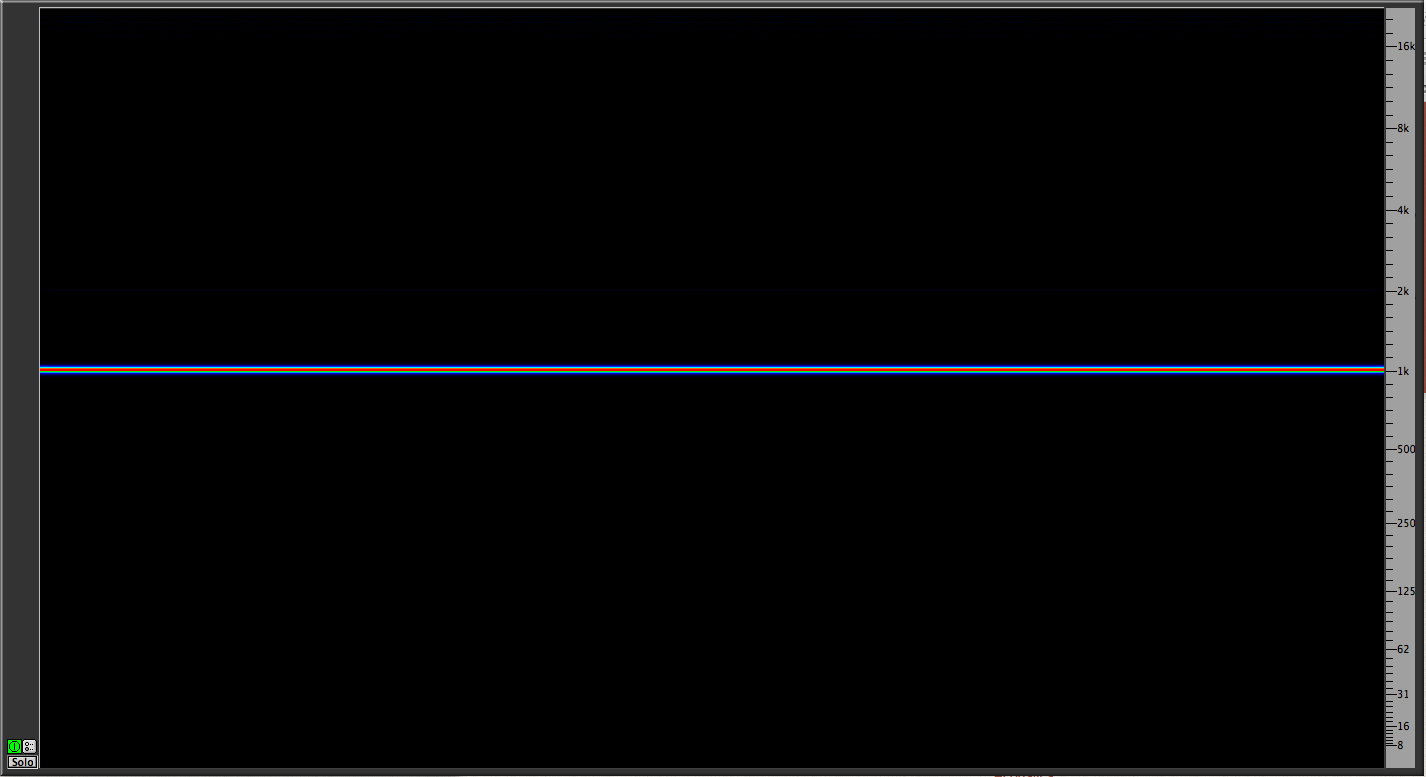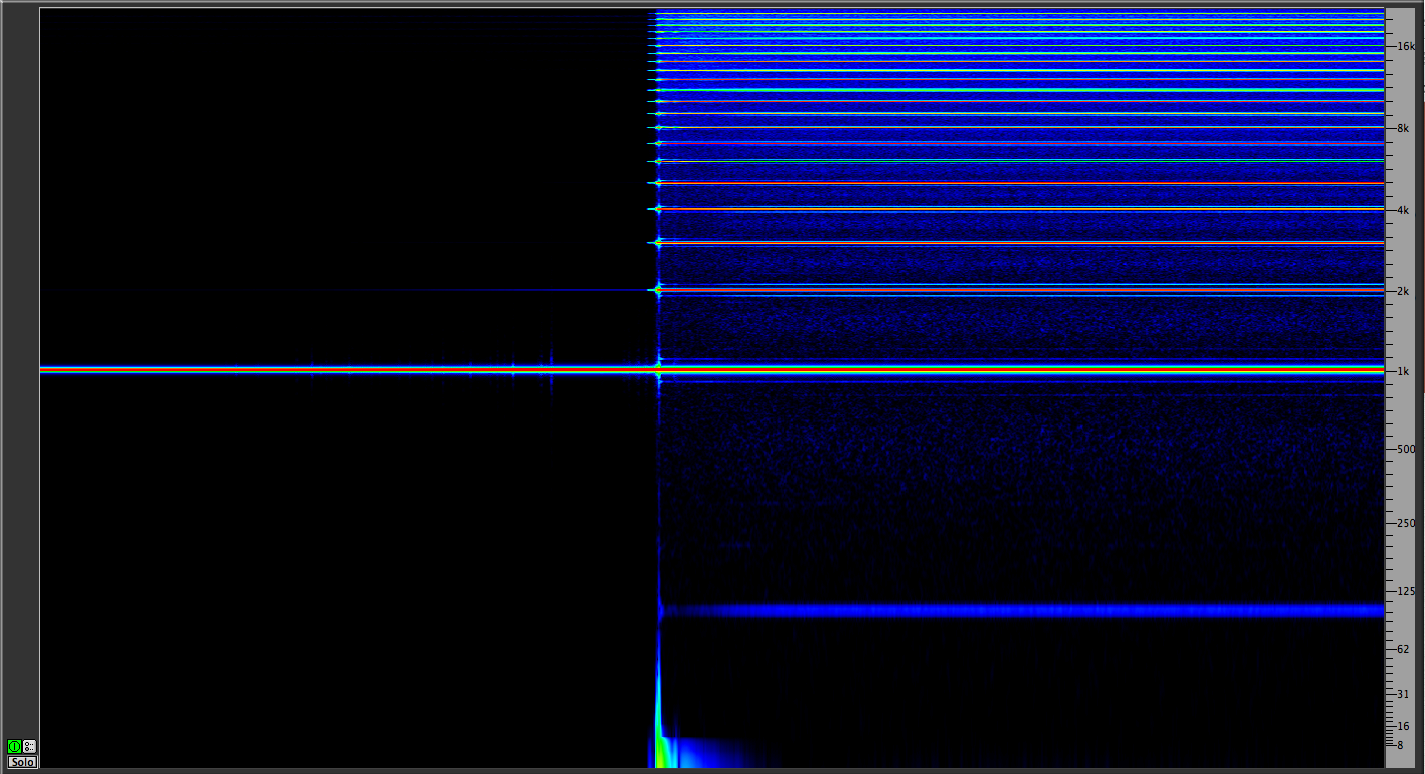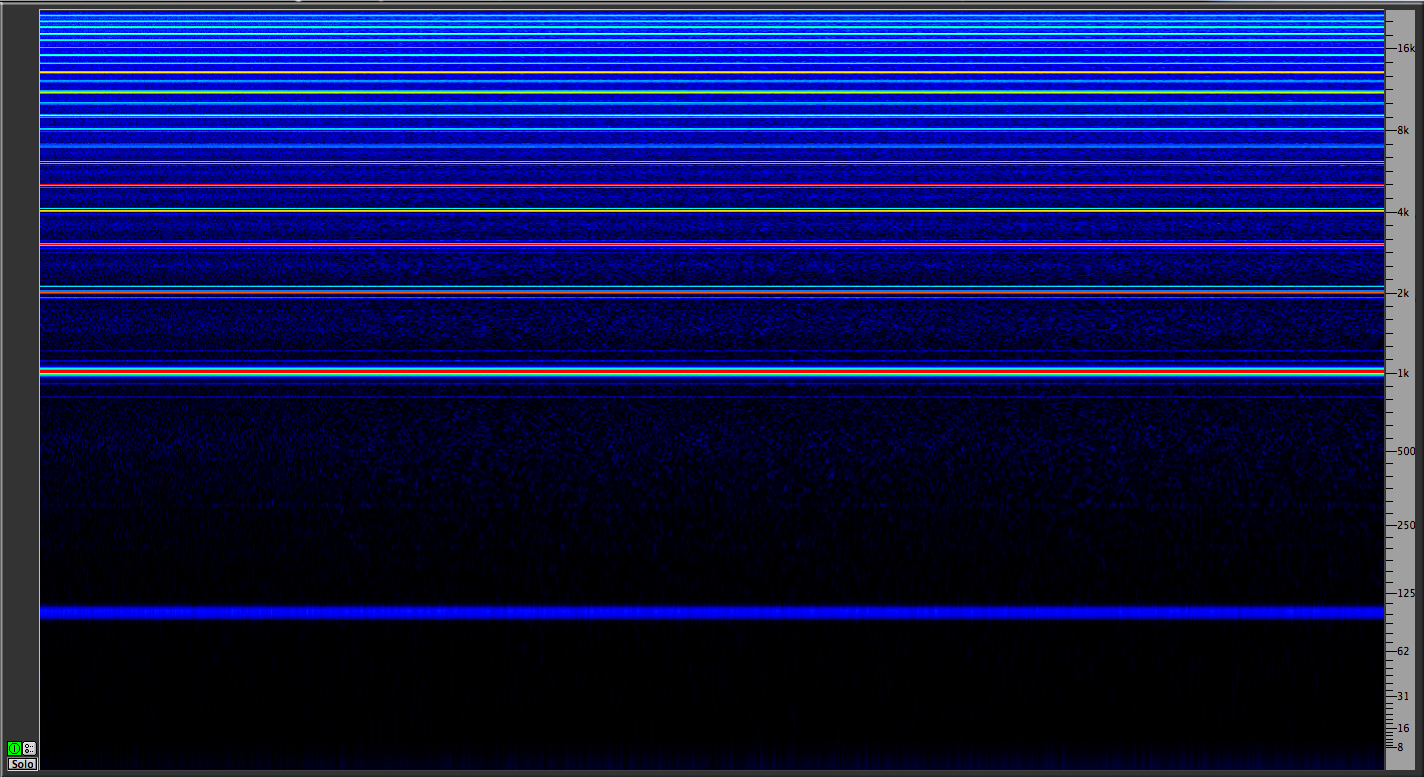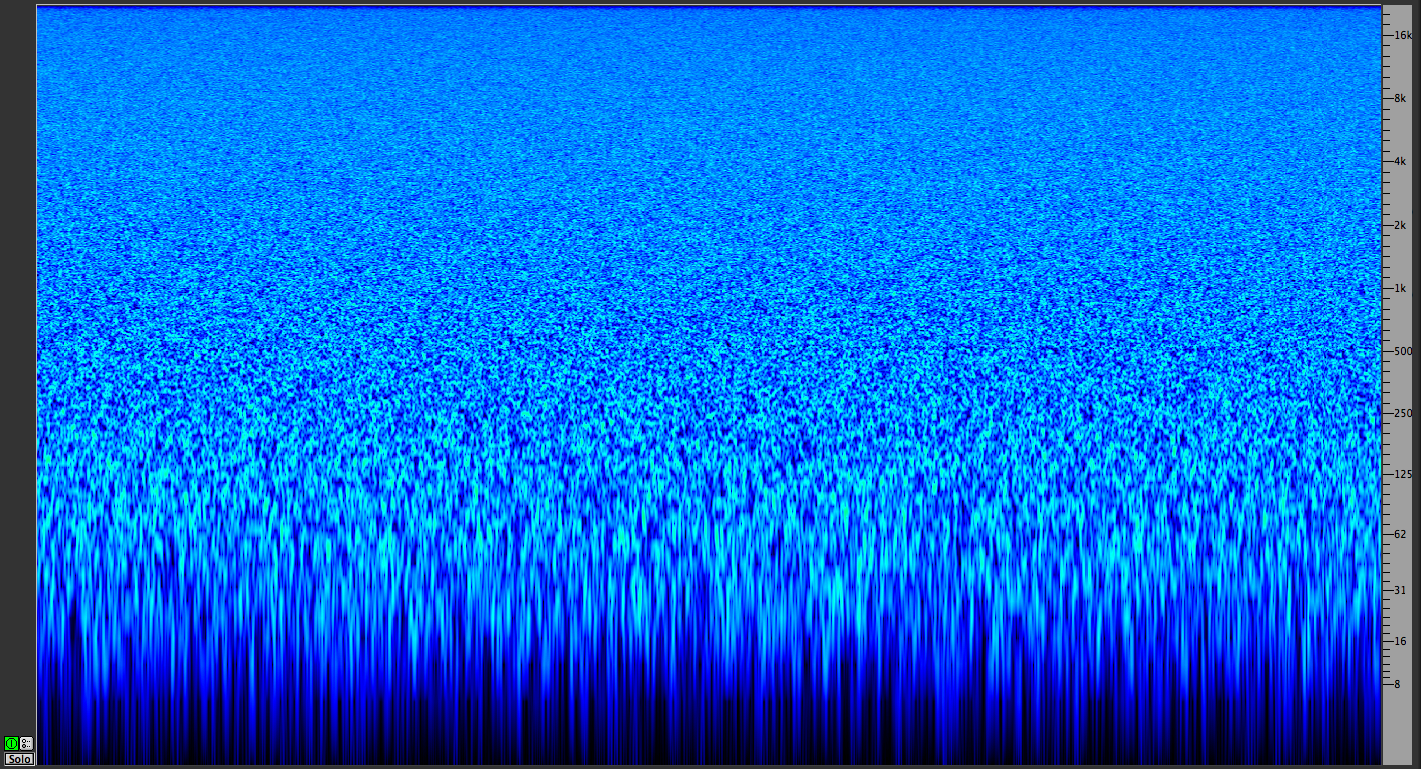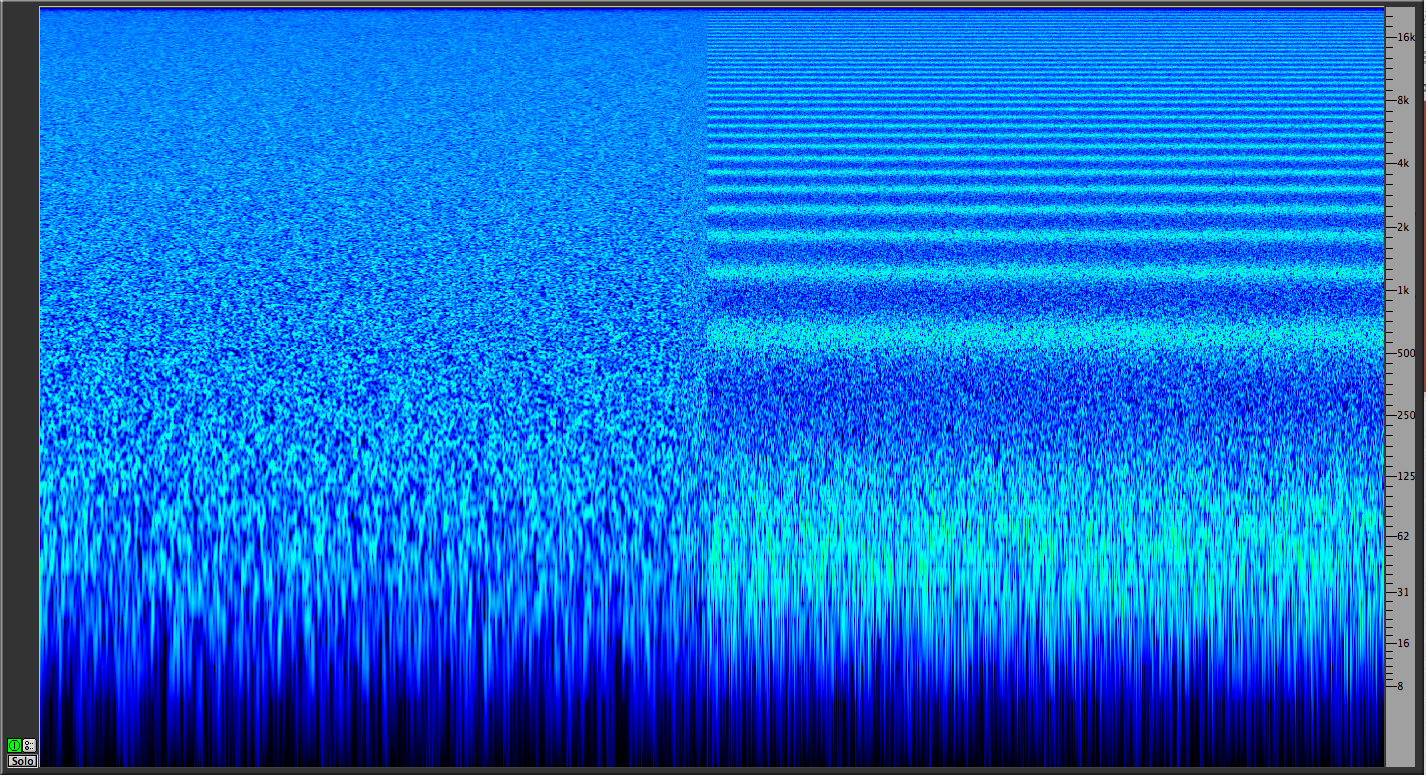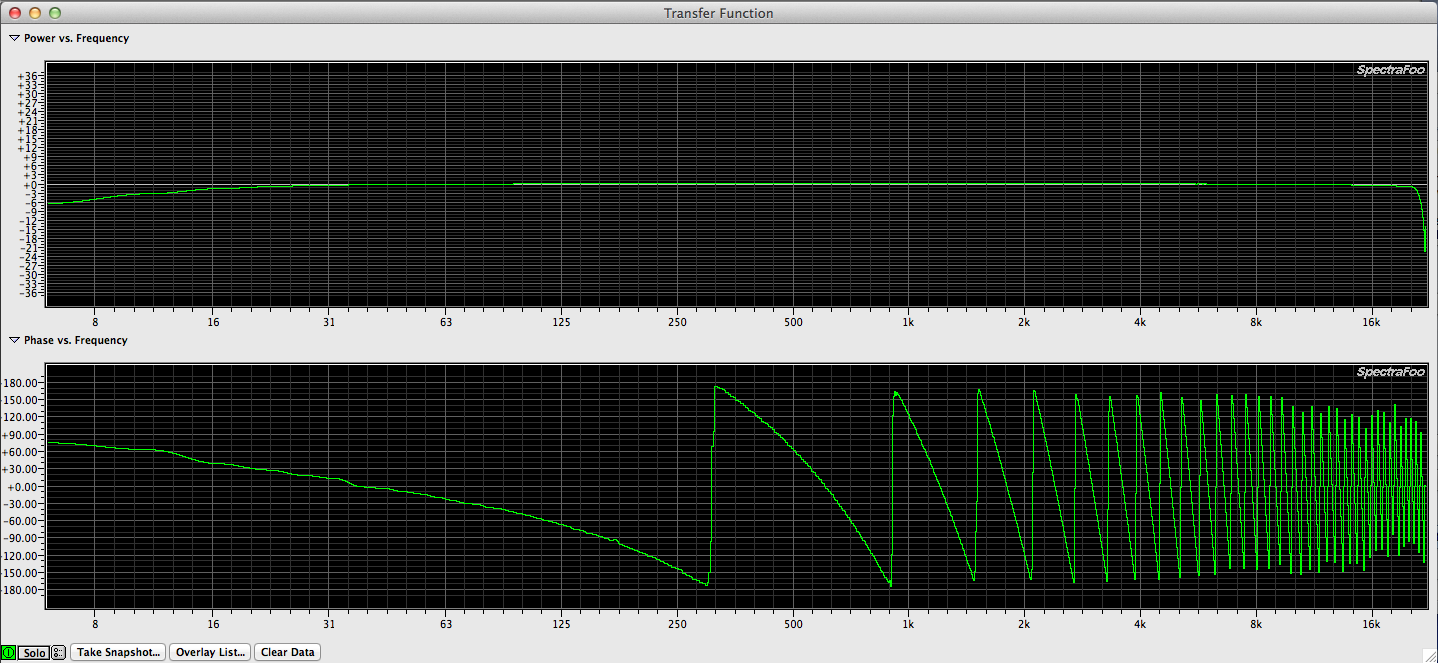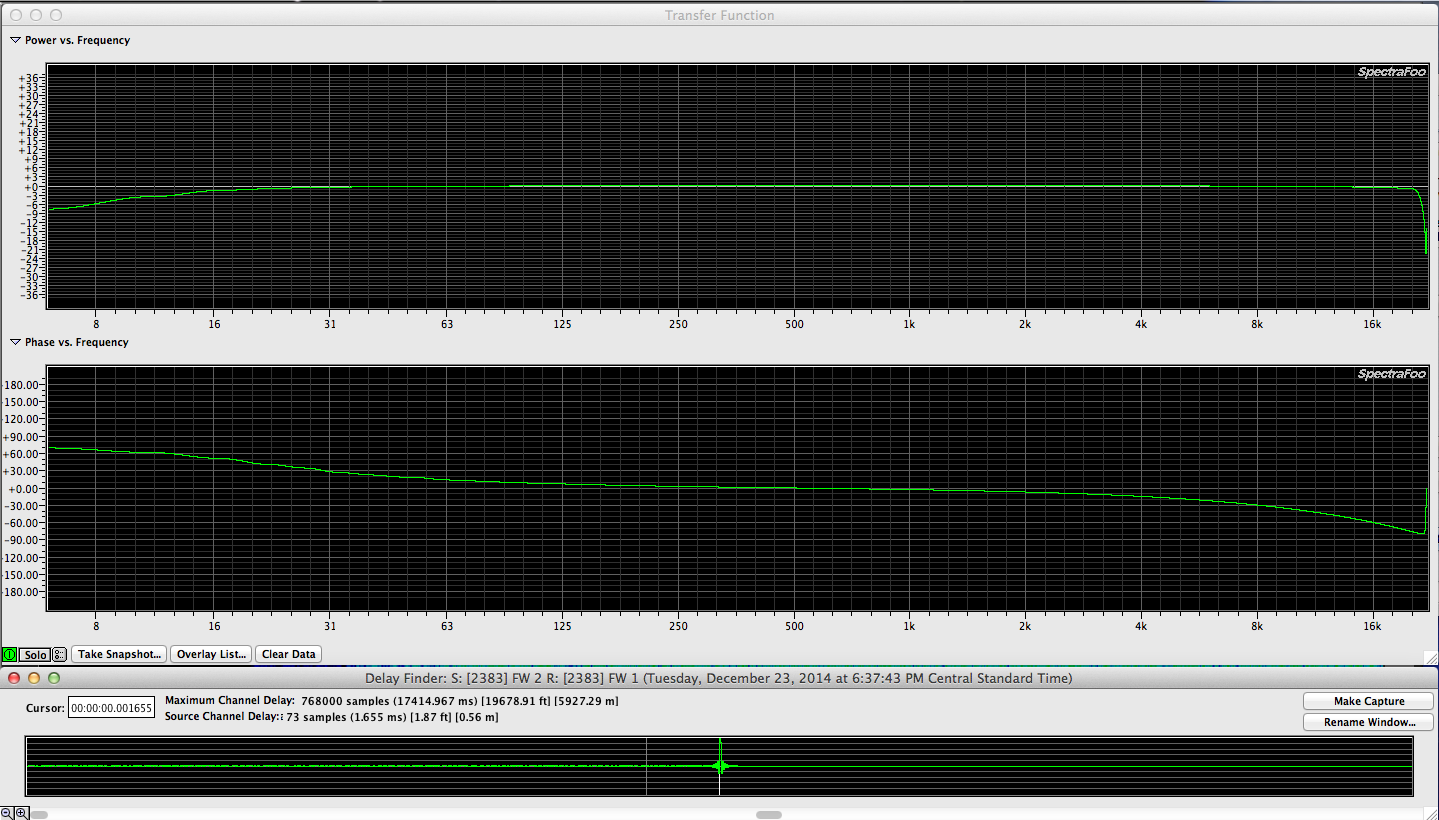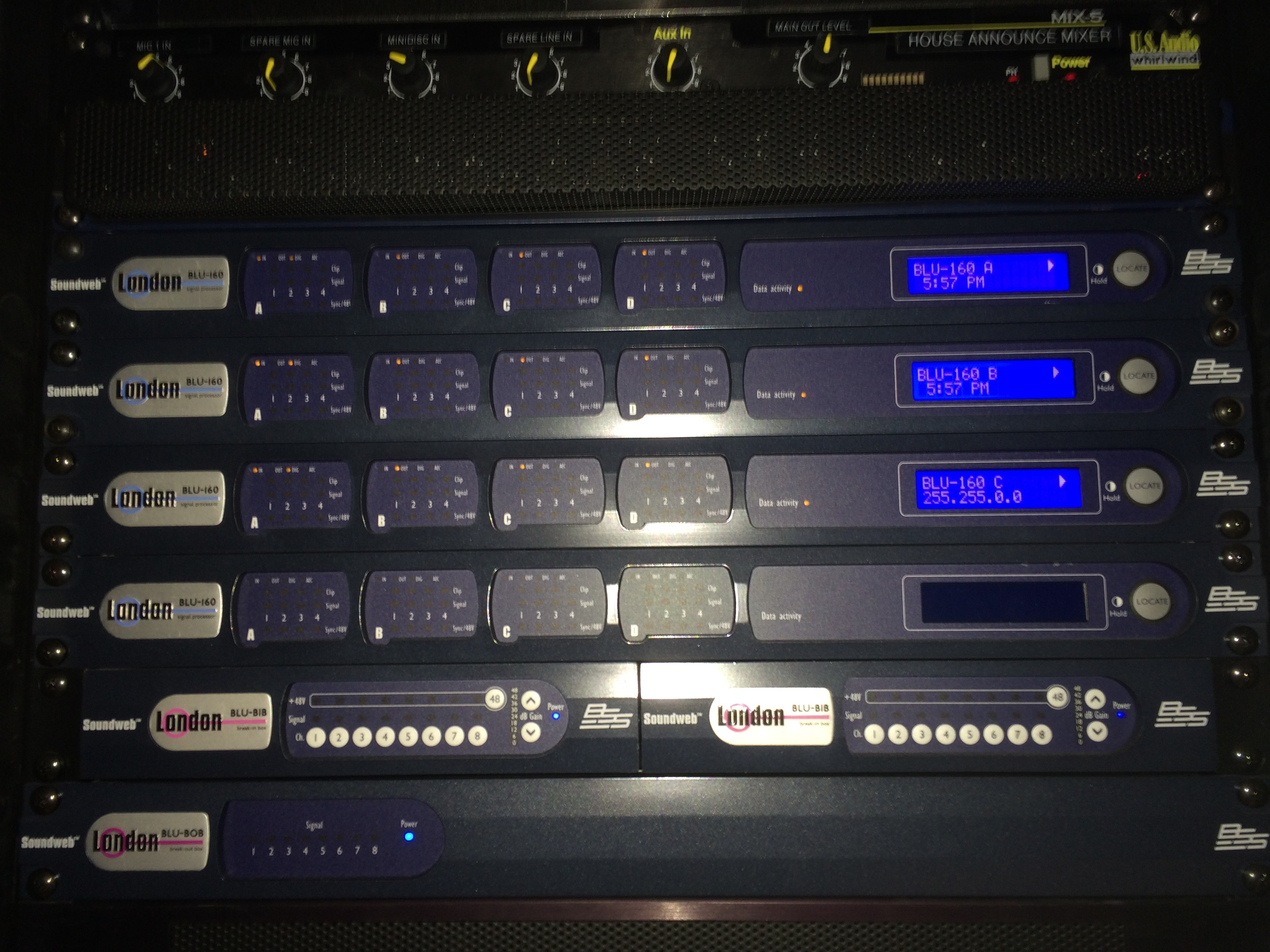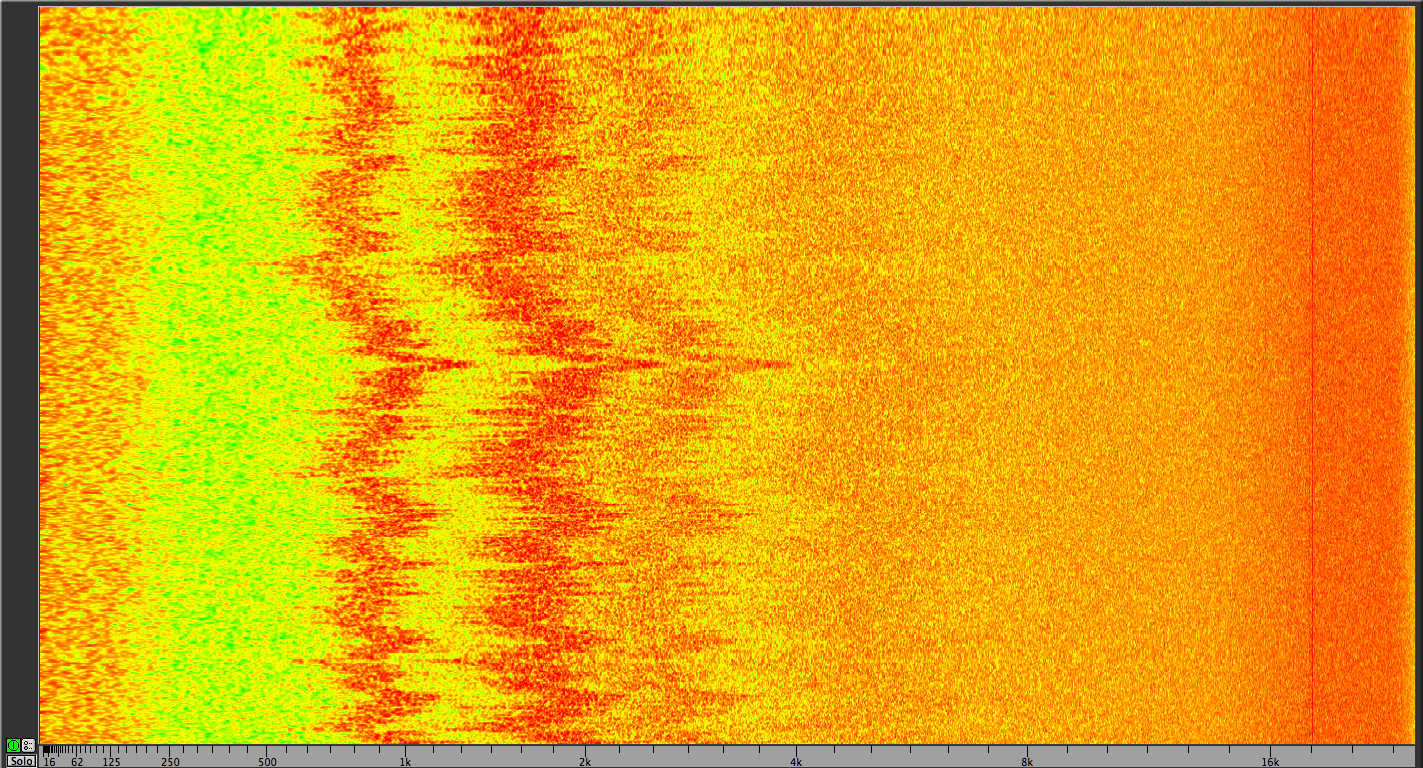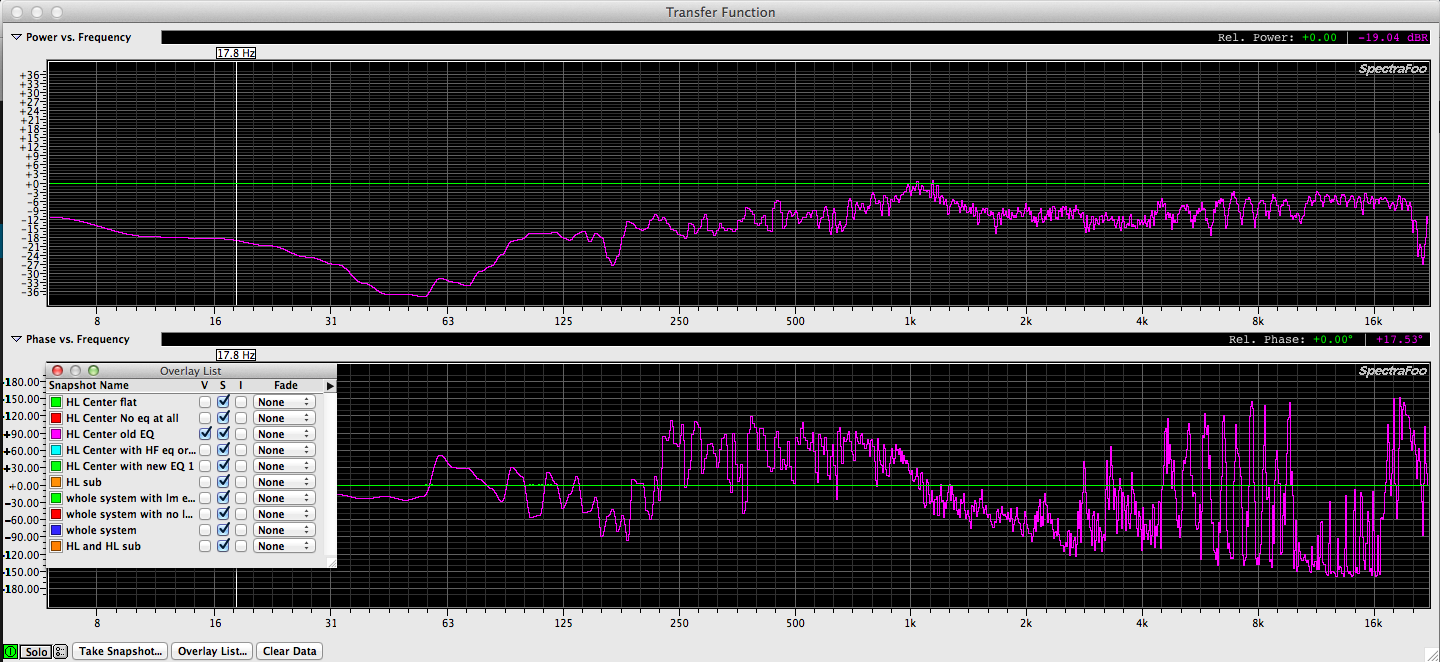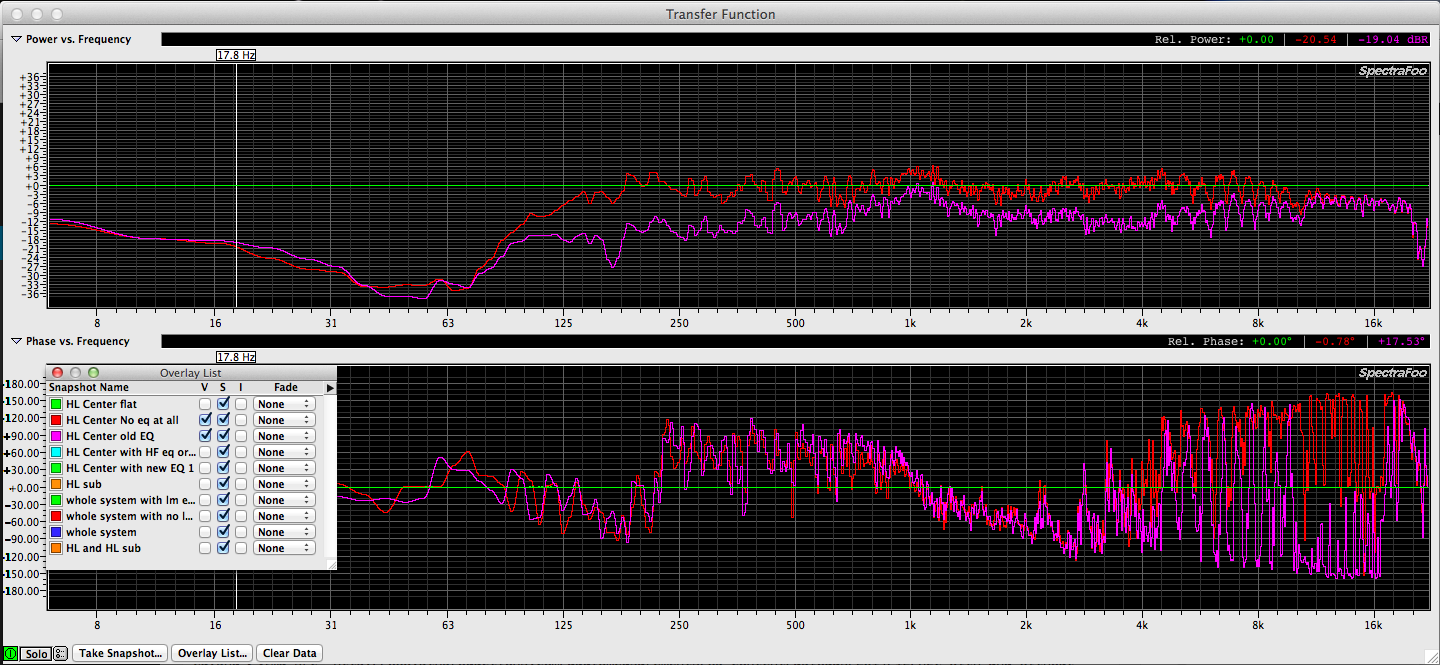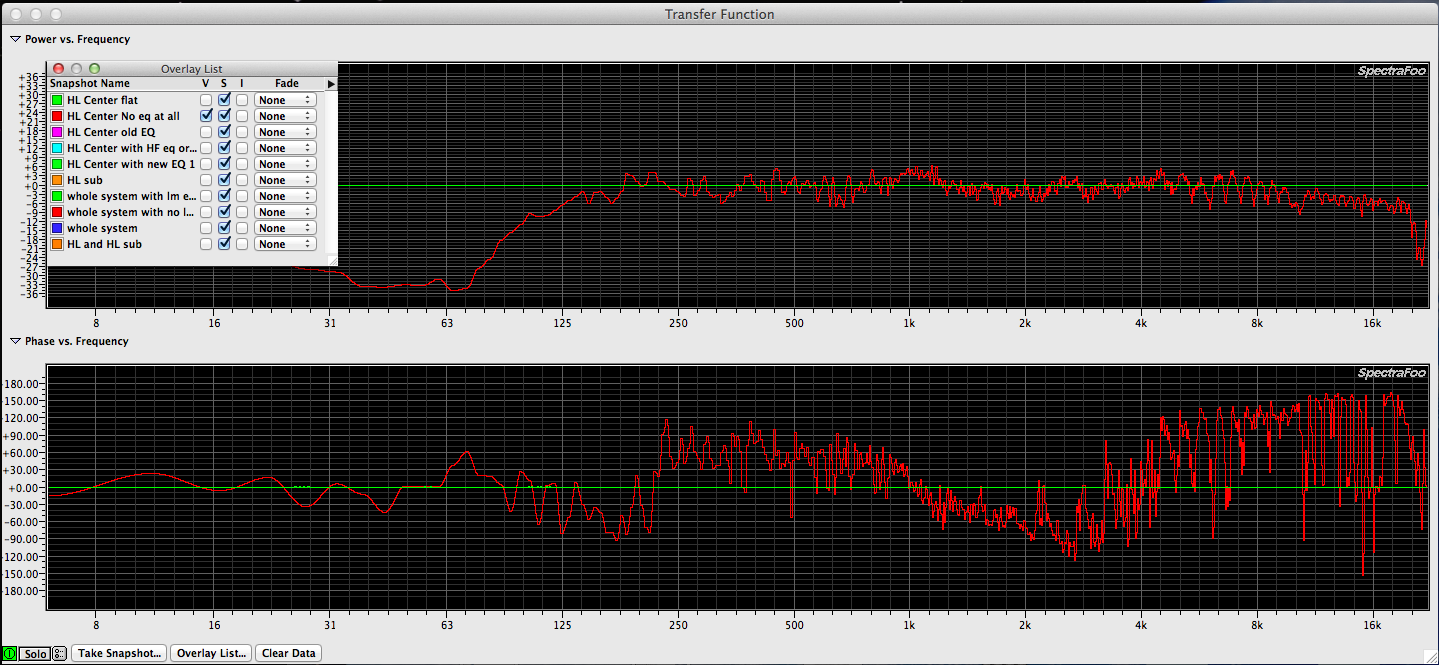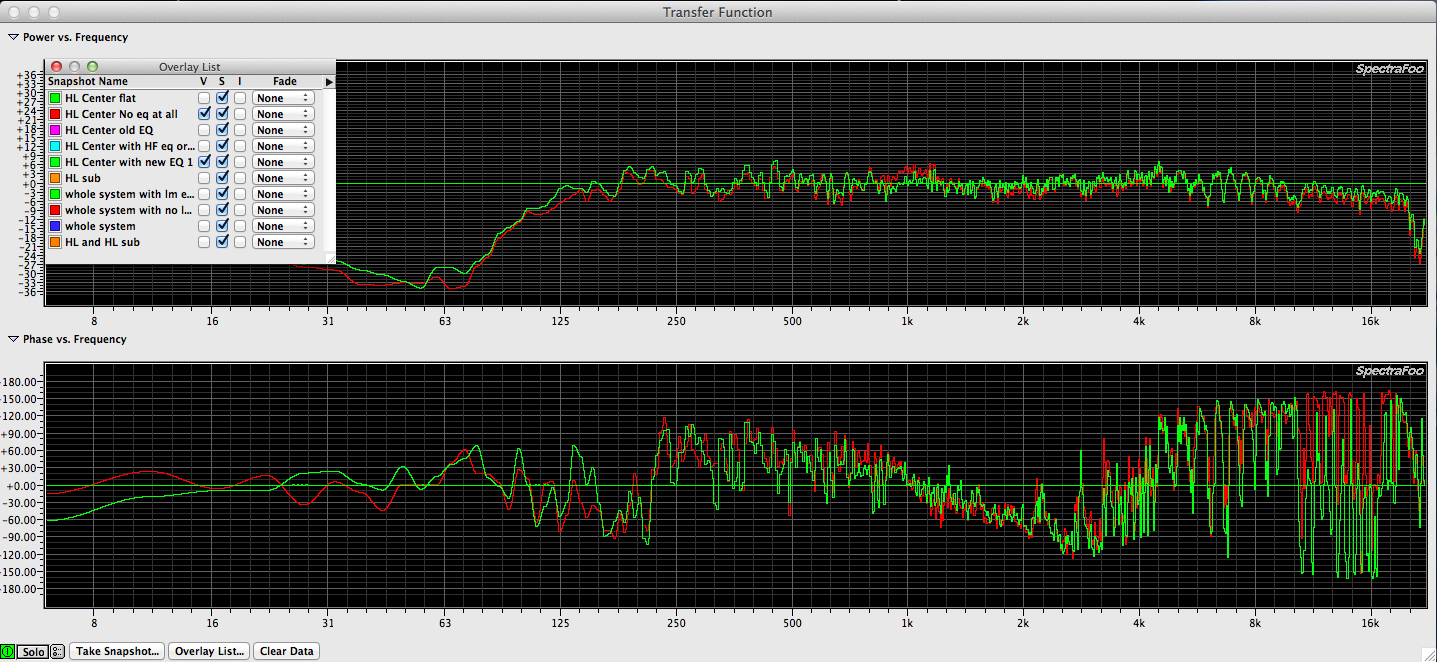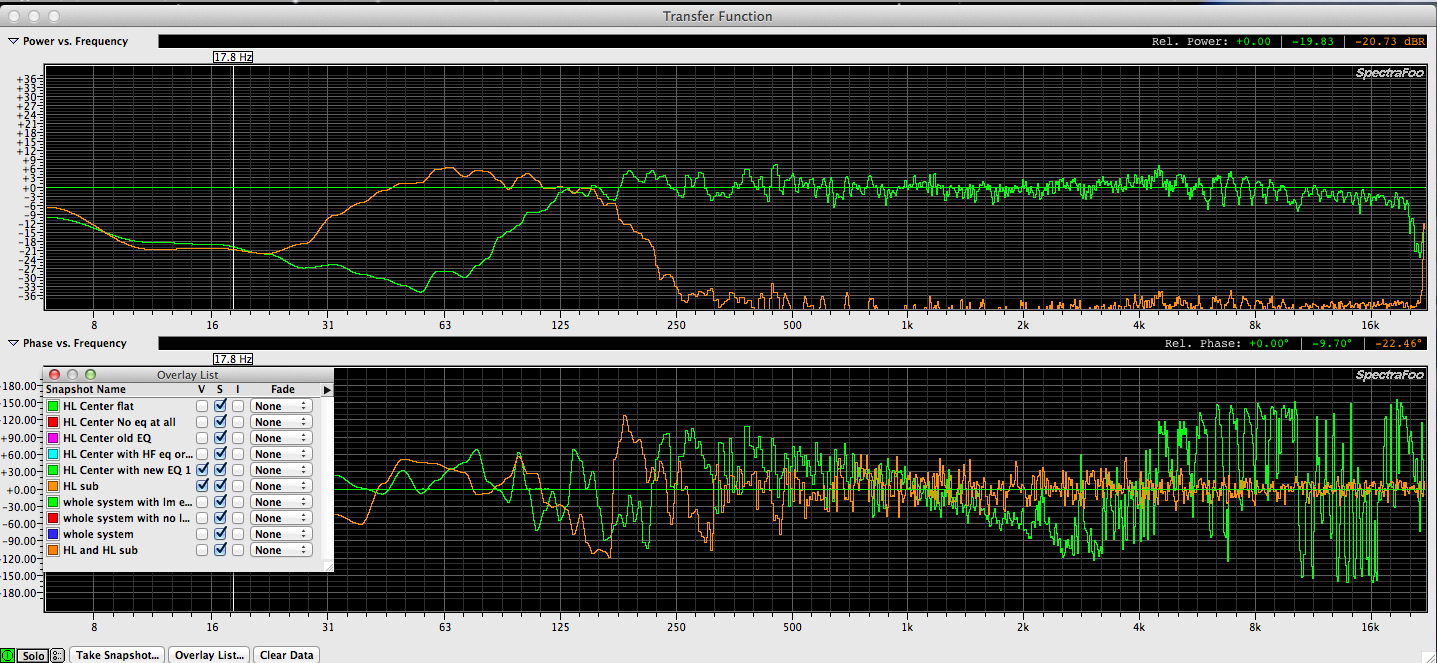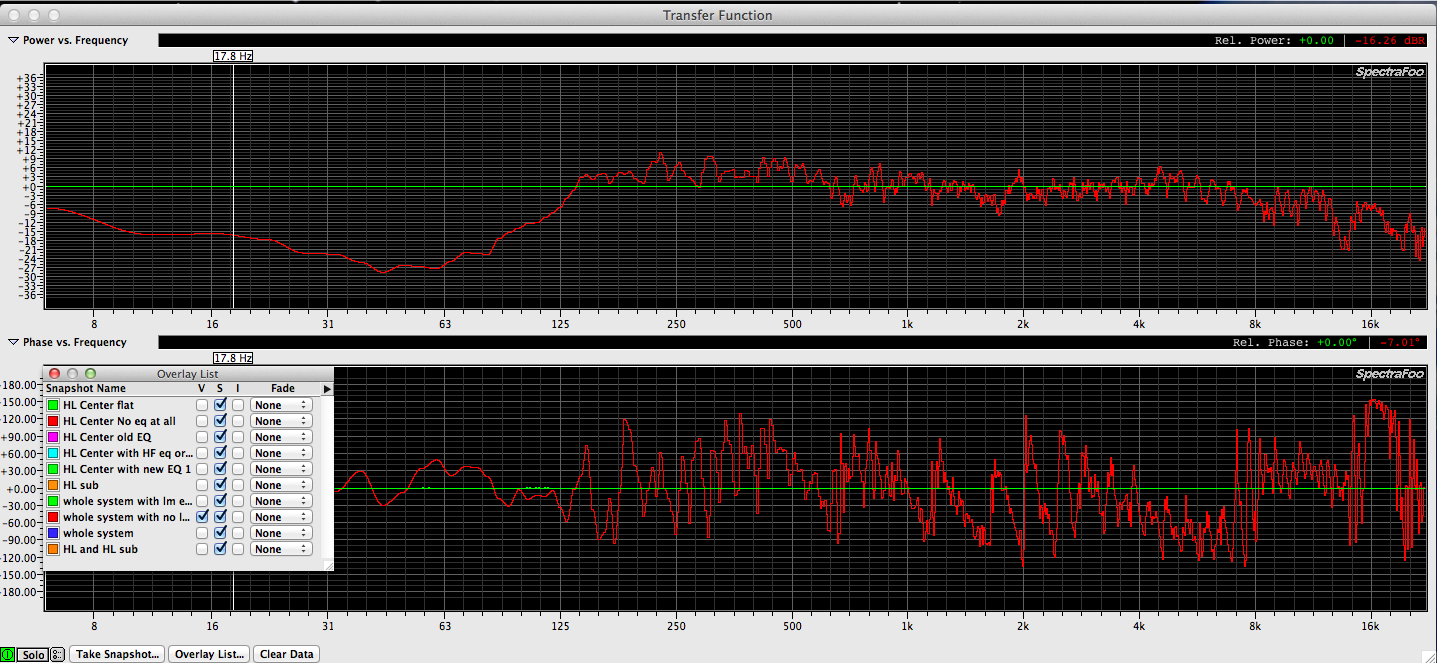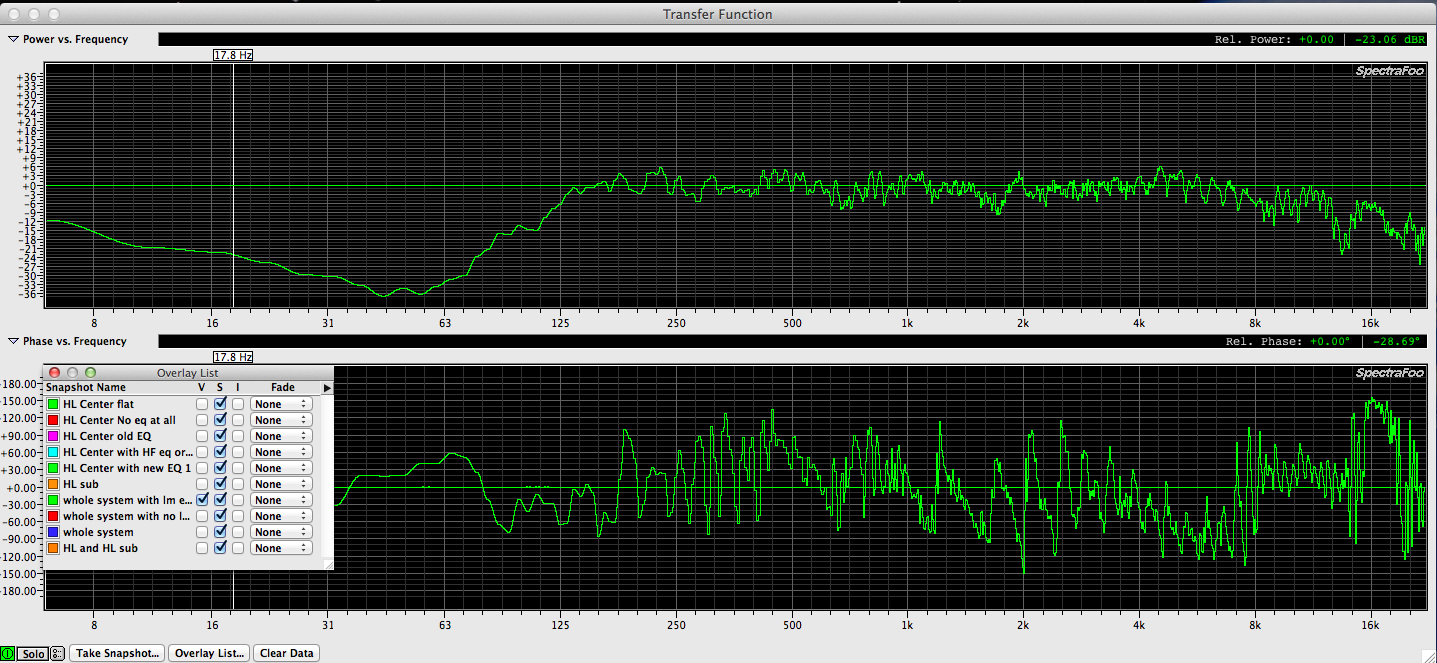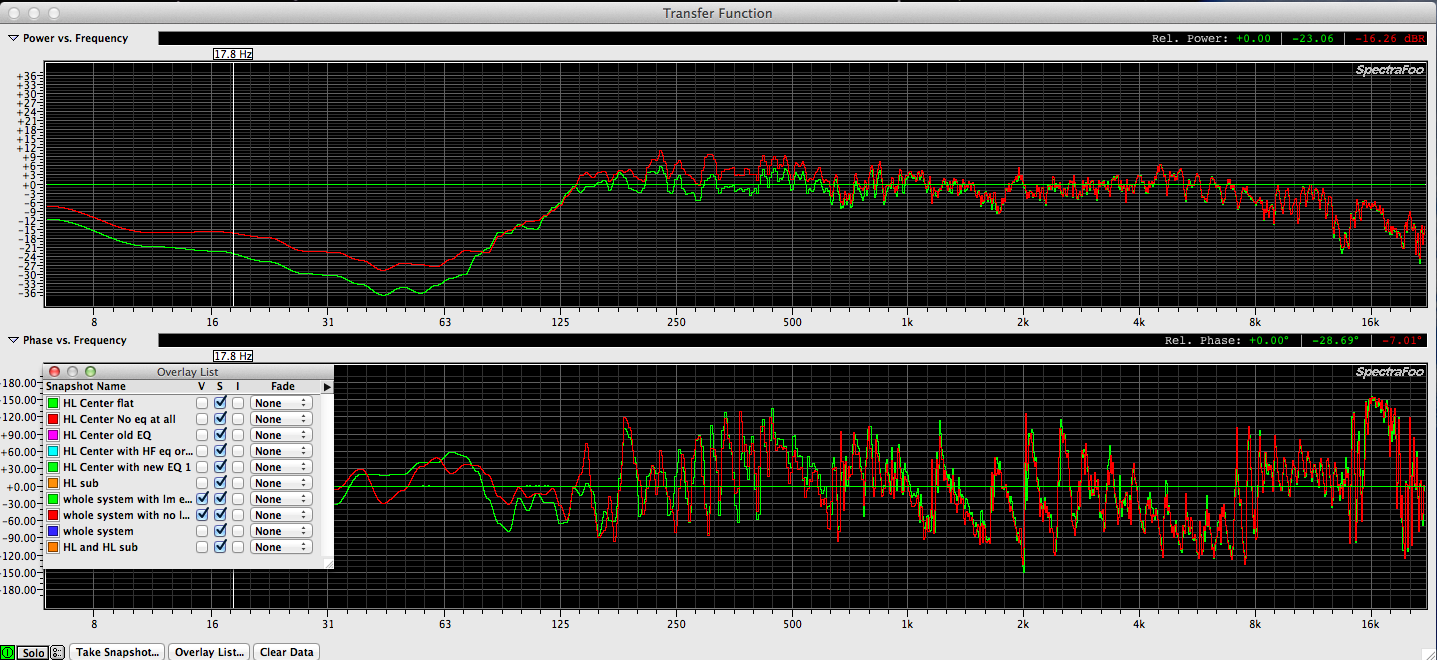Spectragram showing what happens when you overdrive a signal
What happens when you overdrive an input stage of a device or a group of devices?
For this measurement I sent a 1k tone from my Metric Halo 2882 into my Midas Venice mixer and returned it to the 2882.
Here is what happens when I overdrive the input of the console which also overdrives the input of the 2882.
It’s pretty to look at but I am most certain that the audio equivalent will not be pretty to listen to.
Managing your gain from the first device in your audio chain until the last is really important. If a simple 1k tone has this much harmonic content when clipping, think about what music does.
Spectragram showing latency based comb filtering
I just discovered a bad gain pot on one of my consoles and I thought I would see if I could see anything by passing pink noise audio through the channel as I move the pot. Dirt maybe. What does a dirty pot spew out when you move it?
I was hoping to find out but I ultimately learned that the pot has a dead spot.
This is what pink noise looks like leaving my Metric Halo 2882, going into the LINE INPUT of my Midas Venice and returning to the Metric Halo 2882 via the console DIRECT OUT. Pretty much textbook pink noise.
If I have two paths for the signal to follow (one virtual path inside the box and one that passes out of the 2882 into another device and comes back again) there will obviously be latency between those two signals.
This is a screen shot of what happens when I combine those (2) signal at the spectragram instrument input. I unmuted the internal signal part way through the screen capture.
Here we see what happens when two signal arriving out of time with each other combine. In this case the latency between signals is 73 sample / 1.655ms / 1.87 ft / .56 m.
Of special interest is the first cancellation at around 250hz. This could be expected once we know the latency between the signals is 1.655ms.
Here is a transfer function view of the same measurement. Note the phase trace starting at around 250hz.
This screen capture shows the delay time between signals.
Comb filter in the electronic or acoustic realm is best avoided whenever possible.
BPH analog ghost noises 121214
A venue where I frequently work feeds the house BSS London Blue DSP units via AES off their Soundcraft Vi6.
(4) BLU – 160 (one is a powered down spare)
(2) BLU – BIB
(1) BLU – BOB
The BIBs are used when visiting shows have analog outputs such as my rig. There is currently a strange ghost like noise that is present in the PA when the analog inputs are used.
Here is a screenshot of the Spectragram measurement of the sound:
Here is a sample of the sound:
I can convert the outputs from my Midas console into AES via a Metric Halo box I own and I may do that but I’ll be at the venue for the rest of the year and there are other shows coming soon that will use the BIB inputs so it’s prudent to figure out what is causing the noise and resolve it as soon as possible.
We will be doing some troubleshooting once we’re through the weekend and I’ll report back with more information.
Earthworks M30BX
I’ve been intrigued by the Earthworks M30BX since it was release about 10 years ago. It’s essentially an M30 measurement mic with a built in mic preamp so the output is line level. What this means is that the mic can be used to interface with an Ipad or Iphone or Laptop without any external audio interface.
Ignoring the M30BX, all other Earthworks microphones require 10ma of 48vdc. This is the maximum allowed by the P48 standard and reveals one of the reasons Earthworks mics sound the way they do. Headroom.
The one downside is that many audio interfaces don’t provide enough current to use an Earthworks mic. Some will run one mic but not two. Others provide 15vdc or some other voltage which means that an Earthworks mic isn’t running at it’s true potential.
With the M30BX all that is resolved.
Yesterday I purchased an M30BX to move in the direction of wireless measurement. With regards to the industry standard Lectrosonics TM400 kit, having an M30BX will resolve any voltage / current issues.
My plan is to get a Line 6 XD-75 wireless mic kit and interface the M30BX with that system. I know it’s possible because others have done it. My aim is to do it myself and then share how to do it with others.
Stay tuned
Line 6 beltpack and XD-75 for wireless measurements
Here is a thread that discusses using a Line 6 beltpack with an adapter cable and phantom power supply to make wireless measurements.
Winspear Opera House – measurements
It always seems like the measurement process must wait until the very end of any process. The Winspear Opera House measurement event was no different. I skipped taking my dinner break on Friday to tune and delay the front fills and the main arrays. I also tuned the overstage speakers.
I did measure the delay time between the mains and the underbalc system but the delay time was already behind the mains and I couldn’t resolve that issue before doors.
I also measured the delay time between the mains and the upper balc center cluster (Meyer Melodie) but it too was already arriving later than mains.
I was again reminded of how desperately I need a wireless RF option. 200′ of XLR is just not fast enough when you’re working alone.
I have most of the traces saved from that measurement process and will post those soon.
NW Baptist 120114
I installed a PA system for a local church in 2008 consisting of (4) Toby Blasters for main speakers, (2) Toby Blasters for delay speakers and (2) Toby Sheriff subs for low end. (2) more Toby Blasters were used as overhead monitor speakers for the stage. Fast forward to November of 2014 & I recently got a call from the new musical director wanted to revisit the system.
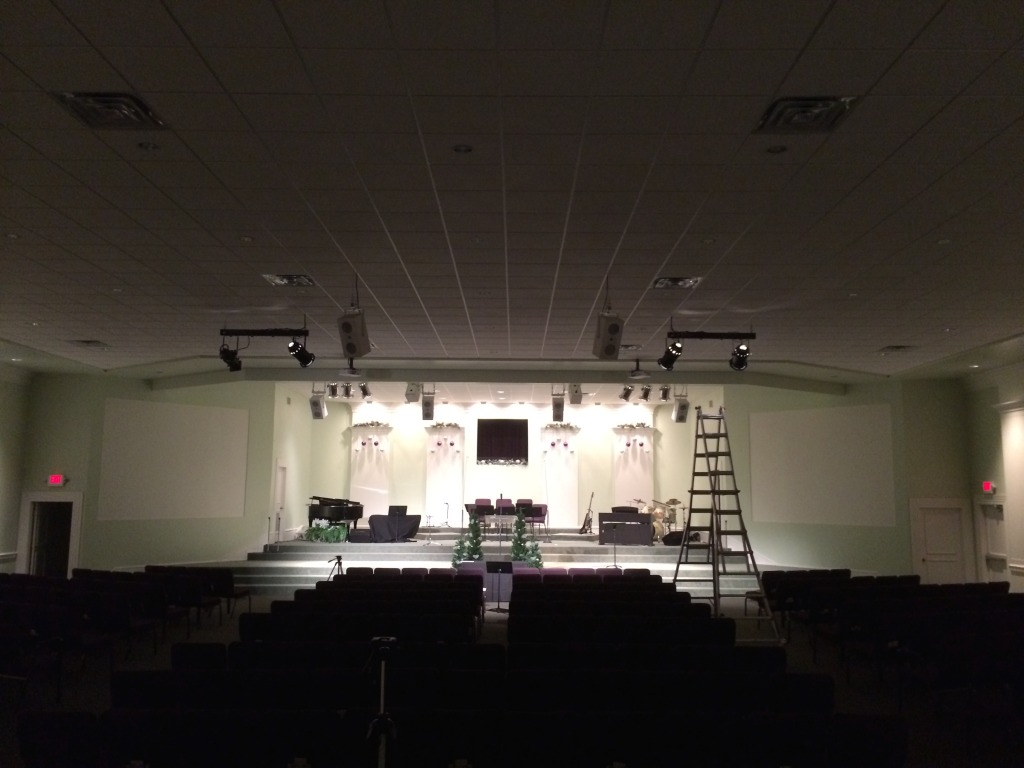
Upond arrival we discovered that (2) of the (8) Toby Blasters had blown HF drivers and those were fixed. We also retuned the system using Spectra Foo Complete’s TRANSFER FUNCTION.
Honestly, in 2008 I had no understanding of FFT / Tranfer Functions and literally no real understanding of how speaker interact with a room. In 2008 I used the dbx Driverack 260s built in RTA tool to system adjust eq.
Here is a trace showing the HLC main measured with it’s 2008 eq in place. Notice the 1k peak and the comb filtering starting at around 4k and extending up past 16k.
Here is an overlay trace showing the original EQ from 2008 and how the same speaker measured after bypassing the original EQ. Note how much gain has been thrown away and yet the 1k peak is unresolved.
This is a glaring example of how either trusting an RTA (which doesn’t tell you what you’re measuring) or using your ears can lead you astray. If I’d used a tranfer function instead of the RTA, I would of seen the comb filtering and realized it’s due to placing the mains too close to the ceiling.
The other newbie mistake I made was choosing a graphic EQ for system processing instead of the parametric eq that the driverack 260 offers.
This time I was able to flatten out the speakers with less than (4) filters per zone.

